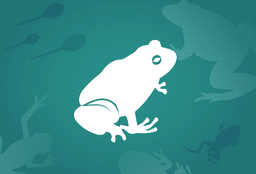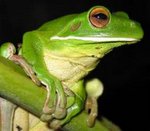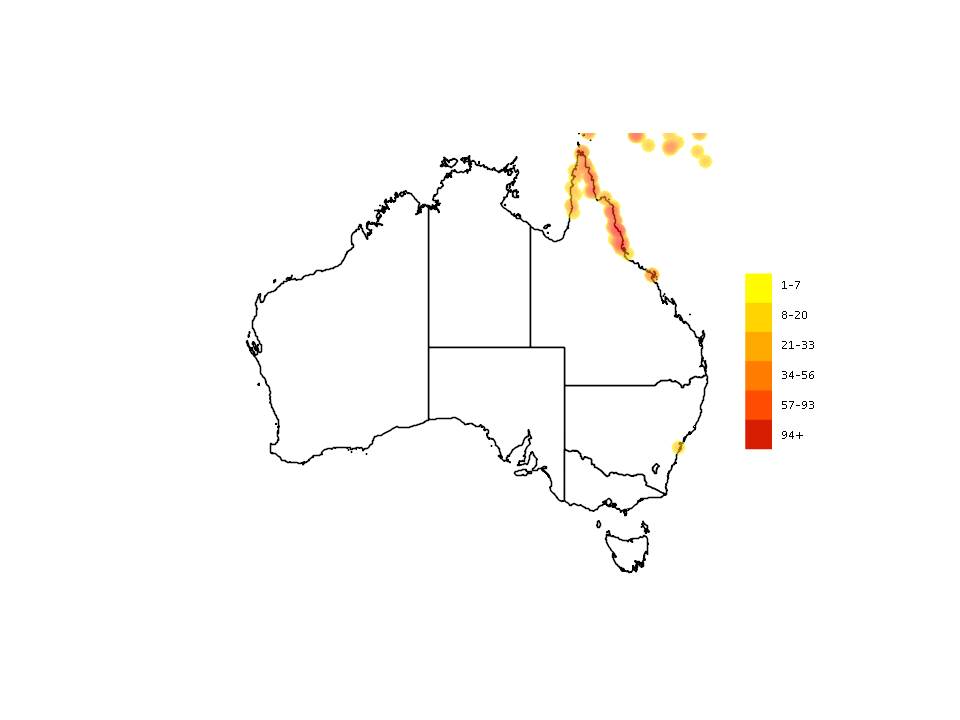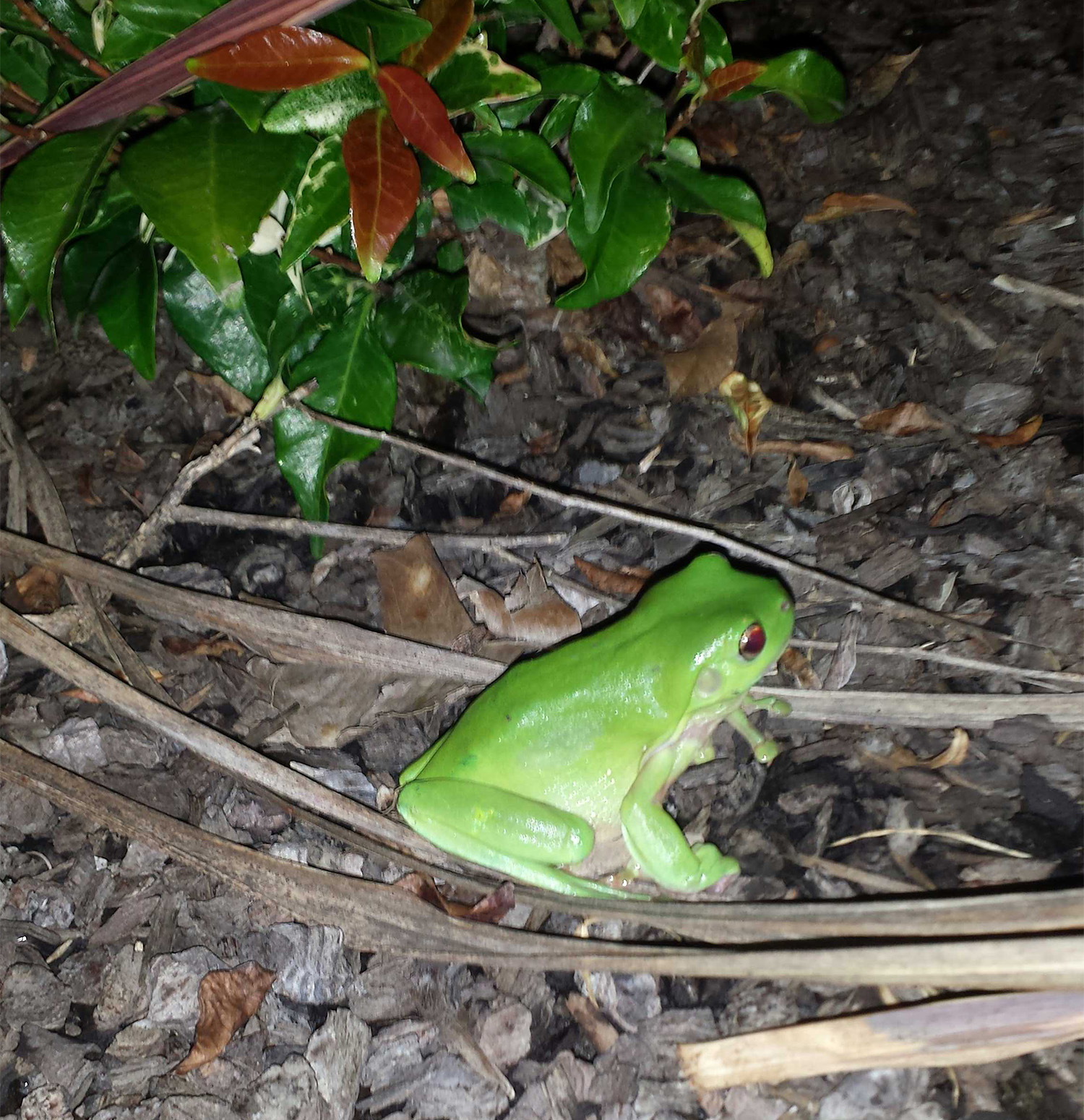Distinctive features
- A white stripe that runs along its lower lip and extends below its ear patch to above the base of its arm
- Its fingers are half webbed and its toes are fully webbed
- It is the largest tree frog in the world and the only one with a white stripe on its lower lip
Behaviour
Call
A loud, harsh barking sound that resembles a strong repeated tapping or “tonk…tonk…tonk” sound.
Listen to the White-lipped Tree Frog call © Nature Sounds/David Stewart
Diet
Small insects and vertebrates.
Movement
Agile climbing.
Breeding
After rain, males perch high up in the trees surrounding swamps and ponds, and call to attract females. Females lay dumbbell-shaped clumps of about 4,000 eggs!
Field Guide
Improve your identification skills. Download your White Lipped Tree Frog field guide here!





